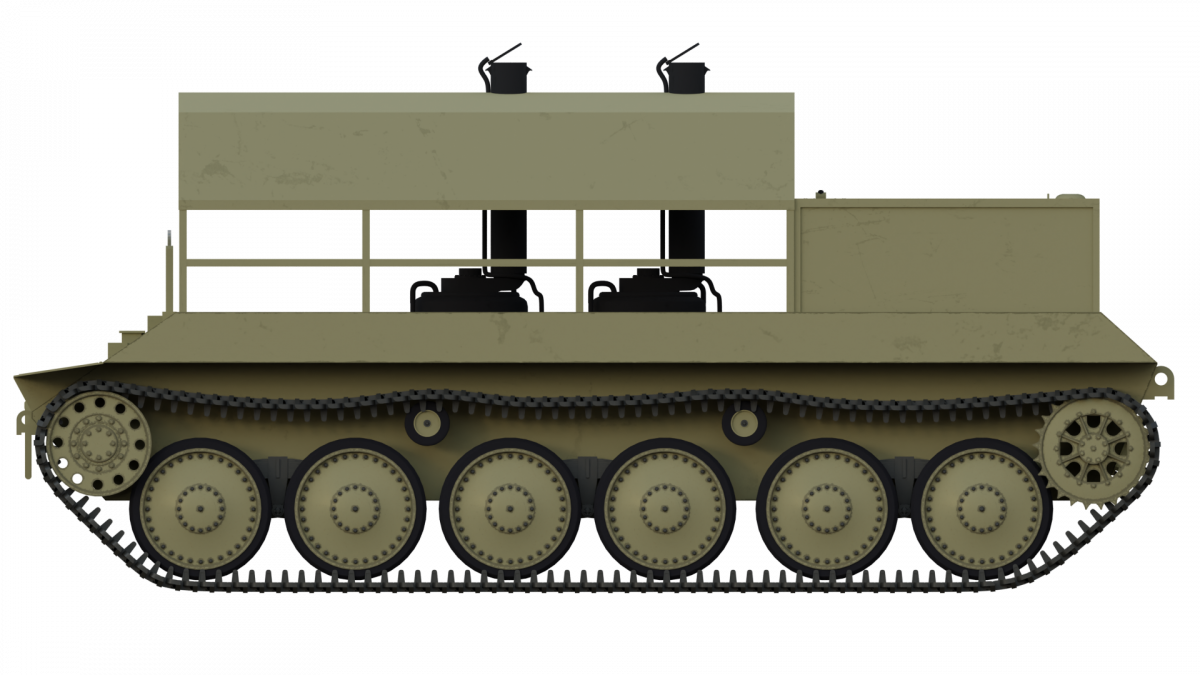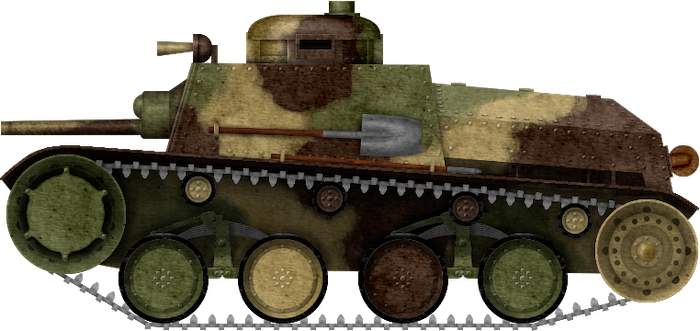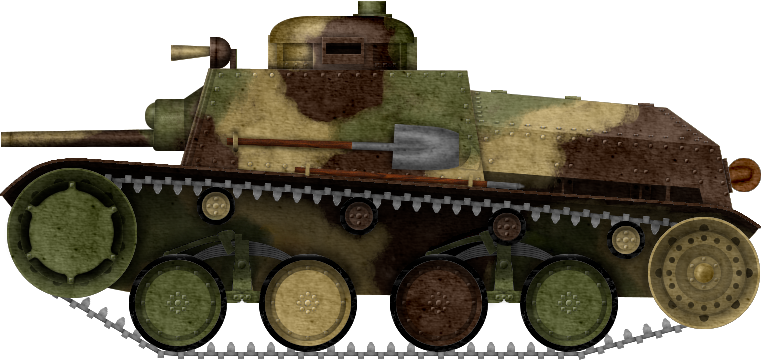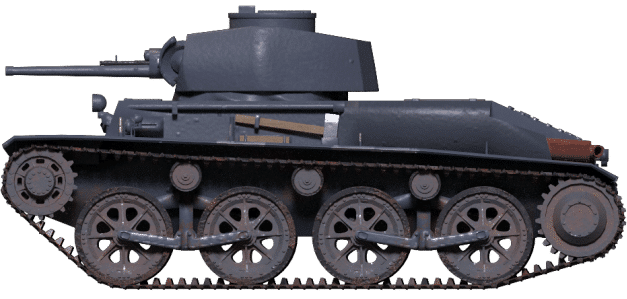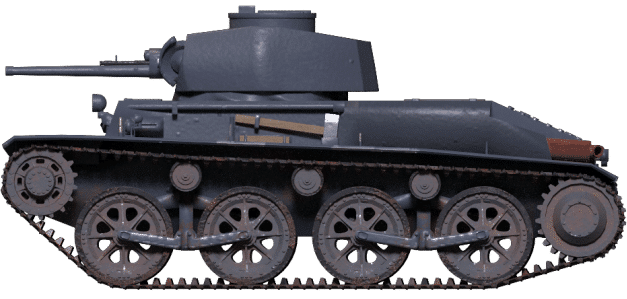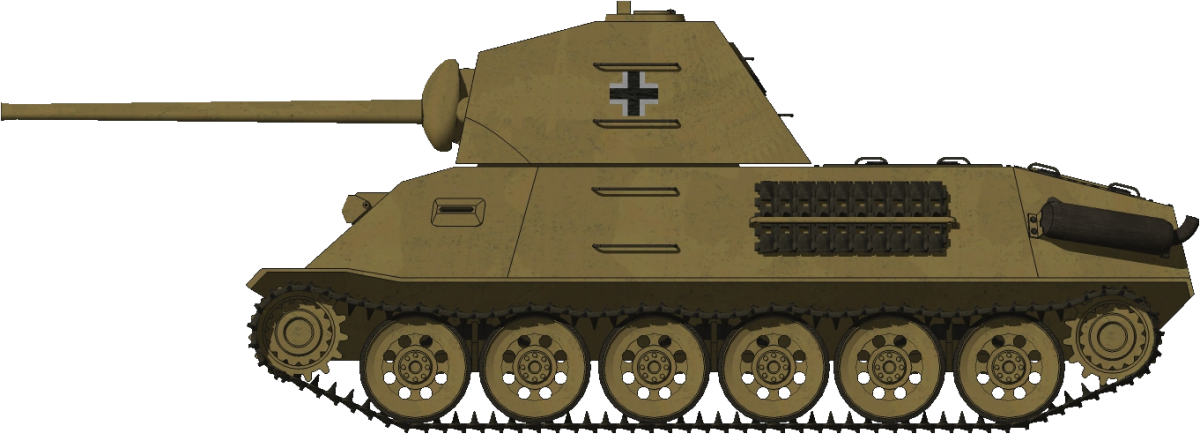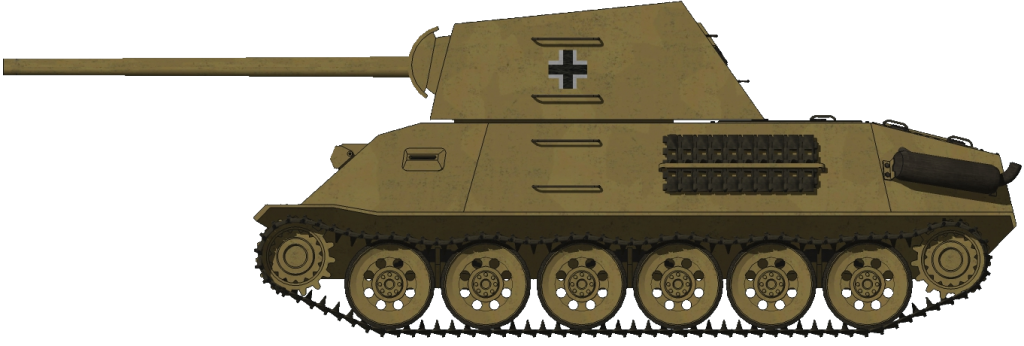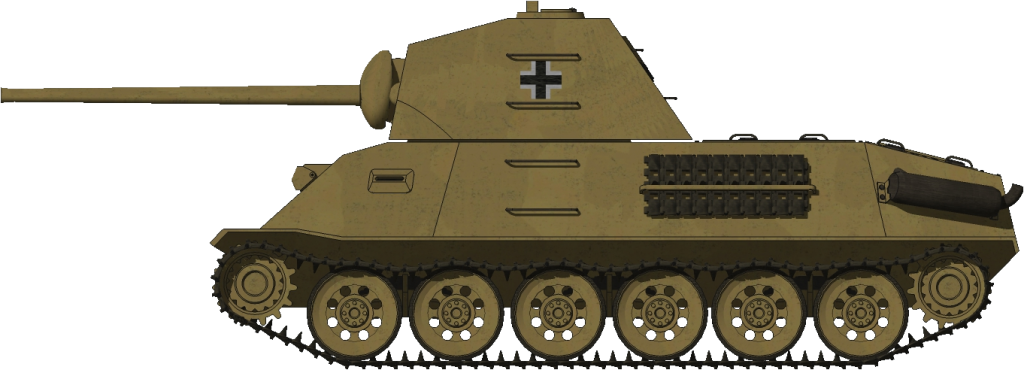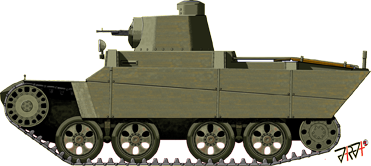
 German Reich/Protectorate of Bohemia and Moravia (1944-1945)
German Reich/Protectorate of Bohemia and Moravia (1944-1945)
Light Tractor – 1-2 Prototypes Built
At the beginning of the Second World War, Germany faced a total resource crisis, especially in terms of fuel. In a panic, the country’s leadership sought for a cheap and plentiful equivalent. Along with synthetic fuel, steam engines were one of many potential substitutes considered. The Škoda SK 13 was amongst the late-war survivors of this technology, combining both archaic and modern elements.
Not From a Good Life
Many European politicians’ hopes for victory at the early stage of World War Two were based on the fact that a lion’s share of global resources was controlled by the Allies or, at least, were beyond Hitler’s reach. The Allies outnumbered the Axis ~3 times in population and ~8 times in territory. Moreover, the British Navy managed to practically cut off the aggressor from the rest of the world.
The only strategic resource that the Germans had in abundance was coal. On the other hand, oil production covered less than 9% of the state’s demand. Only 11% of imported oil came to the Third Reich from Romania, which was accessible by land, another 1.7% from the USSR, and the rest came from overseas. In its article of September 7th, 1939, the American magazine ‘The Oil and Gas journal’ emphasized:
“At this time, the South American countries are the principal suppliers of nations now at war, as well as many of the neutral countries of Europe, with the exception of the U.S.S.R. and Romania, which have crude oil in excess of their requirements. It is apparent that it is to these South American countries and the United States that these European countries must look for any large increase in their requirements as a result of war activities.”

A week later, an article by H. Stanley Norman titled ‘The Nazi War Machine in the Face of Oil Shortages’ appeared in the same magazine, predicting that the German shortage of liquid fuels would begin by the middle of 1940. Alongside that, the presence of large reserves of oil and oil products in the German Reich, a significant production of synthetic gasoline and diesel fuel from coal, as well as ethyl alcohol from potatoes, were mentioned.
Actually, this is what made Blitzkrieg essential for the Wehrmacht: Germany simply could not afford a long-lasting war. In September 1939, the resources of the western half of Poland went under German control. In April 1940, the resources of Norway (with the path to the Swedish Kiruna ore) went the same way. In June, 1940, the French State signed the ‘reconciliation’, so the Lorraine iron ore, along with many resources from the French colonies, became accessible to the Reich.
By the beginning of 1941, oil and petroleum products came to Germany, in certain volumes, from Stalin’s Soviet Union, as well as from Romania and Hungary, which had completely fallen under German influence. Of course, it was no longer possible to legally bring anything from across the oceans, but some bits were still smuggled – even from Britain (via Spain).
In addition, allied Italy turned out to be resource dependent on Berlin. The Germans lacked oil and some metals, while the Italians lacked almost everything. Even though military production (both aviation and military shipbuilding) was well developed, the basic industries – metallurgy, chemistry, machine tool construction – lagged far behind or depended on the import of raw materials. With the entry of Italy into World War II, Hitler had to practically take Italy on the balance sheet and to supply petroleum products, as well as iron ore with coal for metallurgical plants.
Expenses on Italy were comparable to the Reich’s own consumption. In 1942, the last year before Italy surrendered, the consumption of motor fuel in Germany (without the Wehrmacht) was equal to 357,000 tons, and exports to Italy – 285,000 tons. Fuel supplies for the Italian Navy were 280,000 tons, while the German Kriegsmarine got only 140,000 tons.
According to the experience of the previous world war, everyone knew in advance that the need for oil products in wartime increases by about 3 times compared to peacetime. Already in 1937, the famous German economist F. Freudenberg calculated the German need for oil imports in the event of war at 20 million tons, and it was one of the most optimistic forecasts. This level was not achieved, even though the Reich’s own oil production (including annexed Austria, Czechoslovakia, and French Alsace) increased in the period from 1940 to 1944 (according to the 1st quarter in terms of the year) from about 1.5 million tons to 2 million tons. The country could not fully provide itself with essential resources.
By the end of the war, Germany’s fuel supply had seriously deteriorated. This was due both to the destruction of synthetic fuel production plants and to the crisis of coal mining enterprises that supplied raw materials to these plants. The fuel supply to the army and economy of the German Reich in the first quarter of 1945 was kept at the level of 23,163 barrels per day, i.e. 10 times less than in the first quarter of 1944.
Hence, various “ersatz methods” had become widespread, amongst which were:
- Synthetic liquid fuel;
- Gas-powered vehicles;
- Horse-drawn transport;

Another ‘living fossil’ resurrected by the fuel crisis was the steam engine. It seemed to be a great substitute for gasoline engines, so in December 1944, works began on creating a steam-powered tractor named SK 13. The vehicle used Czechoslovak groundworks: a Škoda Sentinel steam truck engine and a Jagdpanzer 38(t) tank destroyer, based on the chassis of the Pz.Kpfw.38(t) light tank, developed by Alexei Surin. The mass production of the vehicle was launched in spring of 1944 at BMM (Böhmisch-Mährische Maschinenfabrik AG, the name of the Českomoravská Kolben-Danek (ČKD) company during the German occupation of Czechoslovakia). The excellent characteristics and the cheapness of the chassis made it possible to build various new vehicles on its basis, including tank destroyers, artillery and, of course, tractors.
Design
Hull

For the construction of the SK 13, the base of 38(t) was significantly altered. One of the most important changes was the increase in length. The hull was lengthened and two roadwheels were added on each side, resulting in six roadwheels on each side. They were interlocked on three bogies with spring suspension. The location of the sprockets at the rear of the vehicle was not changed. The idlers, in turn, remained in the front. Despite the relatively large diameter of the roadwheels, a set of two return rollers was retained as part of the chassis.

To solve the main layout problems, it was proposed to seriously redesign the hull. The existing hull was extended by about a quarter, which allowed it to maintain an acceptable ground pressure and internal volume. The inclined frontal plate of a small height was kept, and boxes were added above the tracks. The design of the rear part was also revised several times due to multiple changes to the technical task.
There is no information about the armor layout of the tractor. It can be assumed that the use of an existing chassis led to the preservation of the armor of the base Jagdpanzer 38(t). In favor of this version, in particular, are the weight indicators of the prototype. The steam tractor could have had armor from 8 to 60 mm thick, capable of protecting the crew and components from small arms and some artillery systems. This made it possible to use the vehicle in some combat formations with other armored vehicles without fear for its safety.
Engine

The chassis was not the only part that was proposed to be borrowed from existing vehicles. Steam boilers with reciprocating machines for use as a power plant were supposed to be taken from the Škoda Sentinel steam truck.
These trucks were equipped with 70 hp steam engines and could carry up to 5 tonnes of cargo. The standing, tubular boiler, with a heating surface of 5.06 square meters, was located in the front part of the truck. It could burn coke, coal, charcoal, wood, and briquettes in it, but coke was the most suitable. The boiler was also equipped with a pressure gauge, a water level mark with a safety valve, and the steam output was controlled by a slide valve. Preparation for driving took about 30 minutes.

With a bore diameter of 170 mm and a stroke of 230 mm, a steam pressure of 19 atp and at 250 rpm, it delivered 70 hp. The crank mechanism was then equipped with a patented differential acting on the chain pinions. The transmission of power to the fixed rear axle was by massive Gallo chains, which drove the double wheels, freely rotating on the axis. The average speed of the truck was about 25 km/h. Lubrication of the steam engine and chains was by an oilcan, separate for each side.

The Škoda SK 13’s steam engine was developed based on the units of the Škoda Sentinel truck, some of which were used in the basic configuration, without any changes. The basis of such an engine was a cylindrical steam boiler. A cylindrical furnace for burning solid fuel was placed inside the outer casing, through which a large number of tubes passed. Water was poured between the furnace and the outer body of the boiler. During the combustion of fuel, water entered the tubes of the furnace and came into contact with its walls. At the same time, the water boiled, after which steam passed through the superheater and entered the cylinder of the piston machine.
To supply air to the fuel, the lower lid of the furnace was made in the form of a movable plate with water, which performed the functions of an ash pan (a container for solid fuel combustion products). Air access was carried out through a gap between the furnace body and the lower lid, the dimensions of which could be changed using a special lever mechanism.

The SK 13 tractor received two steam boilers, both of which were mounted in the center of the hull, one next to another. The piston engines of the two engines were mechanically connected to the rear part of the hull, into the existing transmission. Containers for water and fuel were placed in the free space of the hull. In the later version of the SK 13, fuel and water were placed in two large rectangular containers installed in the rear part of the hull. It is noteworthy that, due to the larger hull and hence larger volumes for fuel, it was possible to achieve a significant increase in the range compared to the Sentinel truck. On the other hand, the increase in the amount of fuel and water led to an additional mass of the tractor.
Boiler Donor: Škoda Sentinel
In the beginning of the 1920s, a new automobile department in the Škoda factories in Pilsen was established. In 1923, the management of the company purchased licenses for the production of the French Hispano-Suiza passenger car and steam trucks from The Sentinel Waggon Works Ltd., Shrewsbury, England (United Kingdom). Part of the British license was also the technology of the steam-powered cars. This was not a new thing in Czechoslovakia, as they were preceded by several vehicles ordered by the Ministry of National Defense in Prague. For example, Kopřivnická vozovka (later known as Tatra) was engaged in the production of steam cars and buses many years earlier. The machine shop in Adamov also tried to produce a model of steam truck under the license of a British company, Richard Garrett & Sons Ltd., Leiston, Suffolk.

At that time, the steam engine had a number of indisputable advantages over the gasoline one, such as its flexibility and that it accelerated quickly. Steam-powered vehicles comfortably climbed steep hills and were easily controlled by a single shut-off valve. It was also possible to stop the trucks immediately by simply closing the valve, as the engine worked as a compressor and braked. Another advantage was lower oil consumption, as, at the time, it was topped up daily in cars. Its low rotations per minute (~300) played another important economic role, by reducing the wear-out of particular parts of the vehicle. However, the far slower start of the steam car proved to be disadvantageous, as the boiler had to be heated first.

The Škoda-Sentinel was, according to the standards of the time, a truck of classic design. It was capable of operating in the most difficult conditions. More than that, thanks to the possibility of flexible operation of the steam engine, the truck also proved itself well in steep terrain. This was demonstrated during Czechoslovak Army tests in 1923 of several imported vehicles, in which the Ministry of Railways also participated. The tests then took place on the Prague – Brandýs nad Labem-Stará Boleslav – Mochov – Prague line. The results were satisfactory and Škoda’s factories, which were looking for production possibilities for their new vehicle department in Pilsen, saw new profitable opportunities and therefore bought a license from the United Kingdom. The vehicle was introduced in many versions: as a flatbed, one-sided or three-sided dump truck, sprinkler or garbage truck, and also as a city omnibus or rail vehicle. Some continued to serve long after the Second World War and were gradually taken out of service only due to the lack of spare parts.
Crew
The crew of the experimental armored vehicle consisted of three: driver, commander, and engineer, who operated the steam boilers and reciprocating machines. In addition to controlling the parameters, the engineer had to throw coal into the furnaces, as well as regulate the water supply to the boilers. Direct control of the car, such as the choice of speed and direction of movement, was carried out by the driver using a set of levers and pedals.
Trials
In 1944, Škoda completed the development of the SK 13 project and built the first prototype. During the assembly and preliminary tests, it underwent some changes, primarily related to the exterior design. In particular, a light roof and containers for coal and water were added, as well as steps being installed on the upper frontal part of the hull to make the process of getting inside easier.

During the tests, it was found that the steam engine was able to accelerate the SK 13 tractor only up to 12-15 km/h. The transported fuel and water supply was only enough for a range of 150 km. Apparently, these figures only concerned driving on roads, whereas, when driving over rough terrain, performance dropped significantly. It is not difficult to notice that in terms of its mobility performance, the steam tractor was significantly inferior to the existing gasoline technology and could not compete with it in any way. Even efficiency in terms of fuel cost was not enough for the SK 13.
Tests of the SK 13 prototype led to two main conclusions about the future of steam technology. The first concerned the fundamental possibility of creating tractors or other military vehicles, including armored ones, with steam engines. The second conclusion imposed new requirements on steam engines for such equipment. The tests clearly showed that two boilers from the outdated Škoda Sentinel truck, with a capacity of 70 hp each, could not provide the required mobility for a relatively heavy and large tracked vehicle.
Due to a number of factors, the steam tracked vehicles of Czechoslovak design were not adopted by the German Army. For this reason, until the end of the war, the problem of fuel shortage was solved by other methods, including the widespread use of gas generators using firewood or coal chips. In addition, the operation of a certain number of steam engines continued. However, this did not last, as in spring 1945, Germany capitulated, eliminating the need of creating military vehicles with alternative power plants.
Škoda SK 23 and BMM SK 33 Projects
Soon after the construction of the updated SK 13, a second participant joined the work. Škoda continued to develop the existing project of a steam tractor for troops, resulting in a vehicle under the designation SK 23. As in the case of the SK 13, a ready-made chassis was proposed in a modified form. At the same time, it was planned to use steam engines of a new type supplied by Krupp. Due to the use of modern steam engines, it was supposed to provide a significant increase in performance compared to the previous SK 13. There were supposed to be certain advantages in speed and power reserve. The efficiency of operating the new steam engine, in turn, had to be ensured through the use of cheap fuel. Due to various production and administrative reasons, Škoda was unable to build a SK 23 prototype for testing. This project never left the drawing board. Various factors contributed to this, mainly problems at the front and the need to focus on the construction of other equipment.

Based on the test results of the SK 13 machine, the company BMM proposed its own concept, which resulted in the appearance of the SK 33 ‘Dampfschlepper’ project, created in two versions (differing only by the steam engine used). In order to increase the mobility of the tractor, it was proposed to reduce the weight of the structure and increase the power of the steam engine. Due to the removal and lightening of certain components, the curb weight of the tractor was reduced to 18 tonnes. The power of each of the two engines was to be increased to 80 hp. Thus, the specific power could grow to 8.7-9 hp per tonne with some positive implications on mobility.
The BMM SK 33 project suffered the same fate as the rival company’s SK 23. By the end of 1944, the situation on the Eastern Front had seriously deteriorated. In addition, Allied troops were developing an offensive in Western Europe. In such conditions, the industry of Germany and the occupied states no longer had the opportunity to engage in prospective projects, as they could threaten the fulfillment of other more pressing orders. As a result, the Czechoslovak industry focused on the production of other vehicles and a lot of new developments were canceled, including the BMM SK 33 steam tractor.


Side Note – Possible Inspiration Source for Wargaming
In 2022, Wargaming introduced a branch of Czechoslovak heavy tanks in their World of Tanks (WoT) game. All of the vehicles presented might be, at best, undiscovered and poorly-developed concepts. It is more likely that in reality they are just fakes without any documentary evidence, created by the developers of the game inspired by some real prototypes (like they earlier did with the Polish medium tank line or Czechoslovak premium medium tank Škoda T 27, which is just an elongated and heavily armed version of real Škoda T 17 light tank).

The tier VIII of the branch is named TNH-105/1000. This designation resembles real ones. Some Czechoslovak vehicle blueprints of that time have the name of the developing company, gun caliber, and muzzle velocity (e.g. TNH-57/900 light tank) on them.

Description from World of Tanks:
In the latter half of the 1940s, ČKD and Škoda engineers developed a joint project for a heavy tank for the Czechoslovakian Army and for possible export purposes. The TNH 105/1000 design was based on available concepts of German and Soviet tank-building and original ideas from Czechoslovakian engineers. In November 1949, the Communist Party of Czechoslovakia decided to discontinue the development of its own vehicles and switched to producing a licensed copy of the Soviet T-34-85 tank. All activity on the TNH 105/1000 was canceled and no prototypes were ever built.
The hull of the vehicle resembles th SK 13 steam tractor in many important aspects:
- Both hulls have almost identical proportions;
- Both hulls have a Surin-type suspension with three bogies;
- The drivers of both vehicles are located in the right part of hull’s front;
- The chassis of both vehicles have a sprocket in rear and an idler in front;
The main difference, apart from the external appearance and rear shape, is propulsion. Unlike the SK 13, Wargaming’s TNH 105/1000 is not powered by a steam engine. In-game, it has two variable engines: Škoda AHK (in-game designation ‘Škoda V16 AHK-2’) and ČKD AXK (in-game designation ‘ČKD AXK proto’) 1000 hp engines, developed for the Tank všeobecného použití (TVP) project at the beginning of 1950s.
WoT’s ‘historical description’ places the TNH-105/1000 ‘development period’ to the late 1940s (probably 1947/48), when preliminary TVP designs by Škoda and ČKD were not even finished. The possibility of their engines being used for a separate project is quite low. It is the same story in regards to the chassis. A 50-tonne heavy tank with 100 mm frontal armor is unlikely to be based on an unmodified and not reinforced (as presented in-game) SK 13 hull (and, probably, any hull with Surin suspension in general). At 2.5 times heavier than the tractor’s hull, the question of technical reliability emerges.
Conclusion
The Czechoslovak program of developing a steam tractor in the interests of Germany ended in late 1944 or early 1945. By this time, two machine-building enterprises had managed to create three projects (SK 13, SK 23, and SK 33), of which only one had reached the prototype stage. Studying the SK 13 machine provided necessary experience and knowledge for further development of the concept of steam powered tractors. Nevertheless, the drastically deteriorating situation in the war for Germany contributed to the termination of the project.



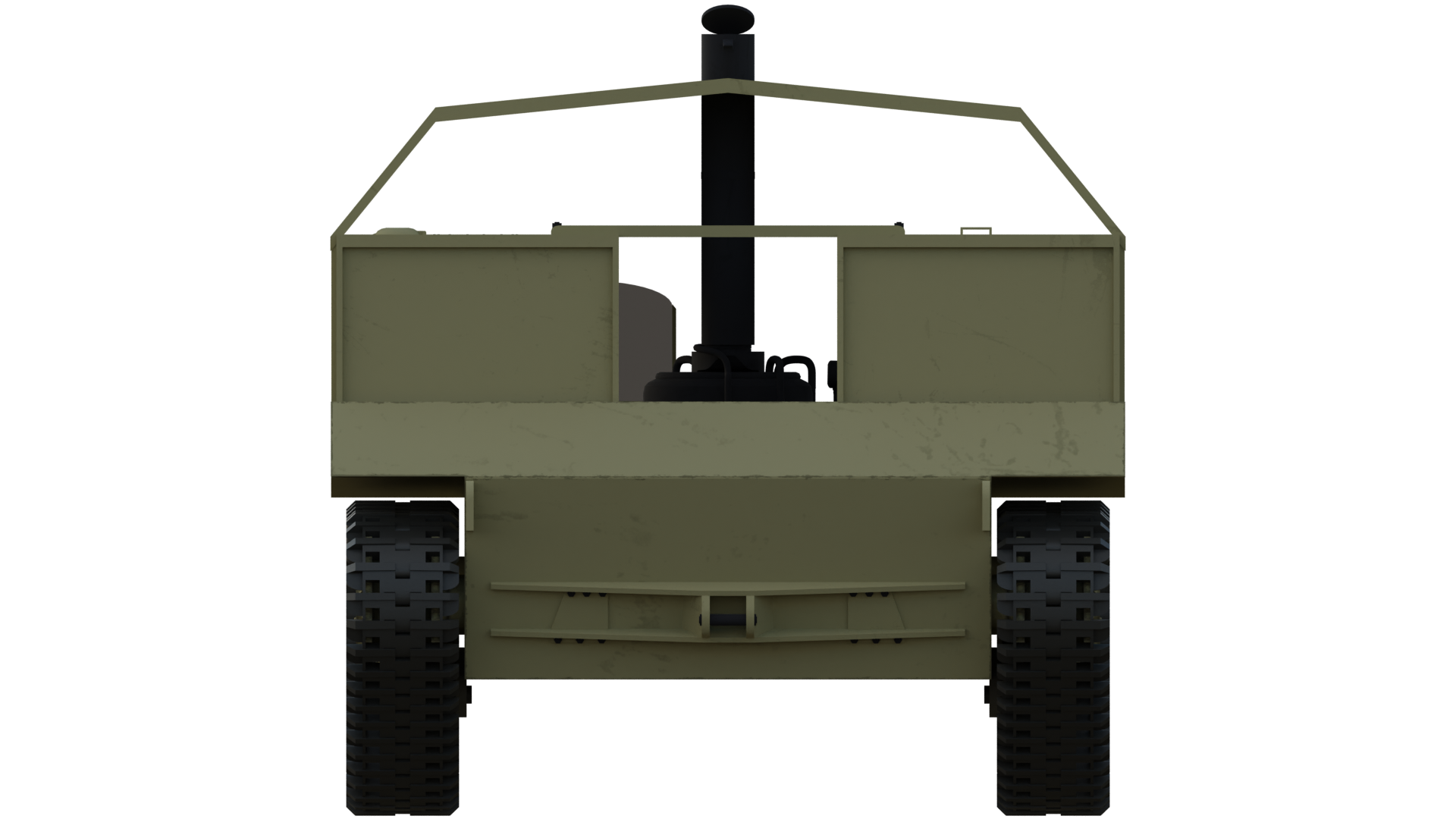

| Škoda SK 13 specifications table | |
|---|---|
| Total weight, battle ready | 20 tonnes |
| Crew | 3 (commander, driver, motorman) |
| Propulsion | 2x Škoda Sentinel steam engines (70 hp at 250 rpm) |
| Suspension | Surin-type, leaf springs |
| Performance | 12-15 km/h (7-9 mph) |
| Hull Armor | 8 – 60 mm |
Sources
https://www.valka.cz/topic/view/79671
https://www.valka.cz/topic/view/253870
https://www.valka.cz/topic/view/253871
Ivo Pejčoch.’Československé Pásové Dělostřelecké Tahače, 1918-1950’;
‘The Oil and Gas Journal’, Vol. 38, Iss. 17 (September 7th, 1939);
‘The Oil and Gas Journal’, Vol. 38, Iss. 18 (September 14th, 1939);
https://shusharmor.livejournal.com/656677.html
https://topwar.ru/92719-proekt-parovogo-gusenichnogo-tyagacha-dampfschlepper-chehoslovakiya.html;
http://www.sentinel.cz/;
http://www.drewnozamiastbenzyny.pl/gaz-drzewny-definicja/
https://tanks-encyclopedia.com/ww2/nazi_germany/gas-powered-fahrschulwanne-tanks.php;
http://samlib.ru/p/polo_m/6letvehrmacht.shtml;
https://history.ric.mil.ru/Stati/item/408834/;
https://wiki.wargaming.net/en/Tank:Czechoslovakia;

